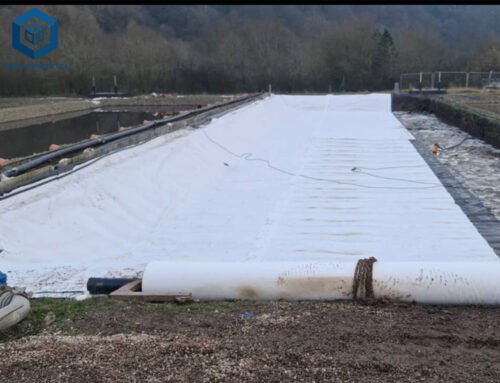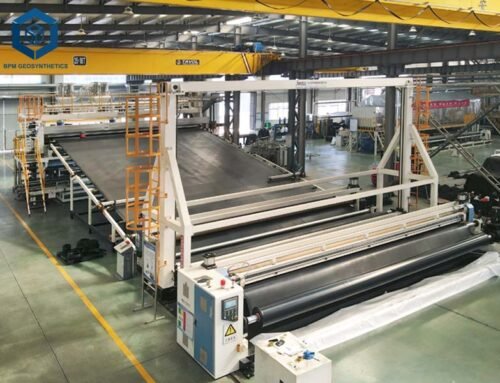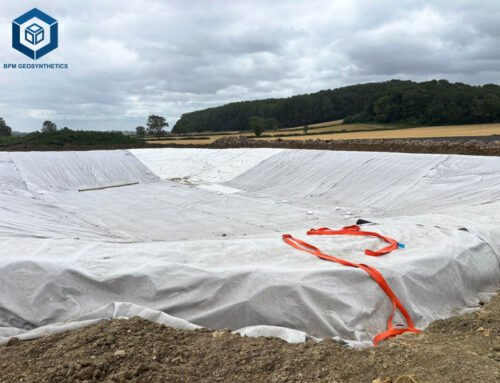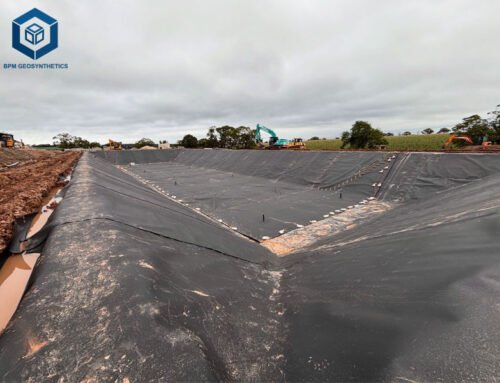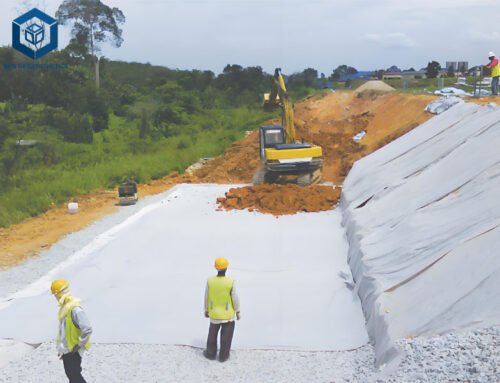Effective water management is critical in civil engineering, environmental protection, and urban planning to prevent pollution, flooding, and infrastructure damage. Drain netting, also known as drain net or drainage geonets, plays a pivotal role in managing water flow and debris in various applications. With the global geosynthetics market valued at USD 14.8 billion in 2024 and growing at a CAGR of 6.9%, drain netting is increasingly recognized for its versatility and cost-effectiveness.
This comprehensive guide explores what drain netting is, its specifications, functions, advantages, disadvantages, and key considerations for selection, providing actionable insights for engineers, contractors, and environmental professionals. Whether you’re protecting waterways, managing landfill leachate, or enhancing urban drainage, this article equips you with professional knowledge to optimize your projects.
1. What Is a Drain Netting?
Drain netting refers to two distinct but related products used in water management: geosynthetic drainage nets (geonets) and debris-capturing drain pipe nets. Both serve to manage water flow and prevent contamination, but their designs and applications differ.
Geosynthetic Drainage Nets (Geonets)
Geosynthetic drain netting, often called composite geonets, is a three-dimensional, net-like structure made from high-density polyethylene (HDPE) or polypropylene (PP). Typically 4–8 mm thick, it consists of a bi-planar or tri-planar core bonded with nonwoven geotextile fabric on one or both sides. This design creates high-flow channels, achieving drainage capacities of 10–50 L/min/m² under typical loads. Used in 60% of landfill leachate systems and 40% of highway drainage projects, geonets replace traditional gravel drains, reducing material costs by 30–50%.
Debris-Capturing Drain Pipe Nets
Drain pipe debris nets are knotless, high-tenacity polypropylene (HTPP) nets attached to stormwater outflow pipes to capture litter and organic matter. With a mesh size of 1–1.75 inches and a tensile strength of 719 lbf, these nets trap debris like bottles, leaves, and sediments while allowing water to pass. Installed in 50% of urban construction sites and 30% of industrial facilities, they are critical for protecting waterways from pollution.
Both types of drain netting address water management challenges, but geonets focus on subsurface drainage, while debris nets target surface pollution control.
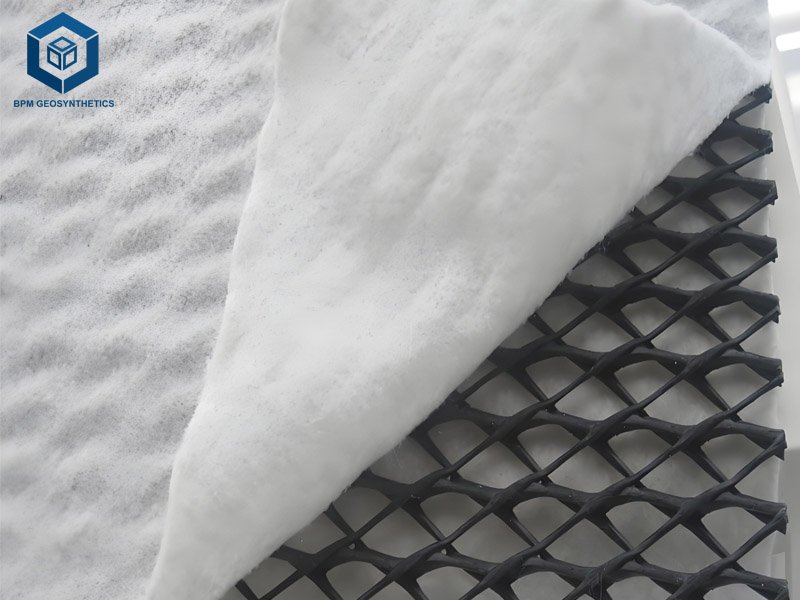
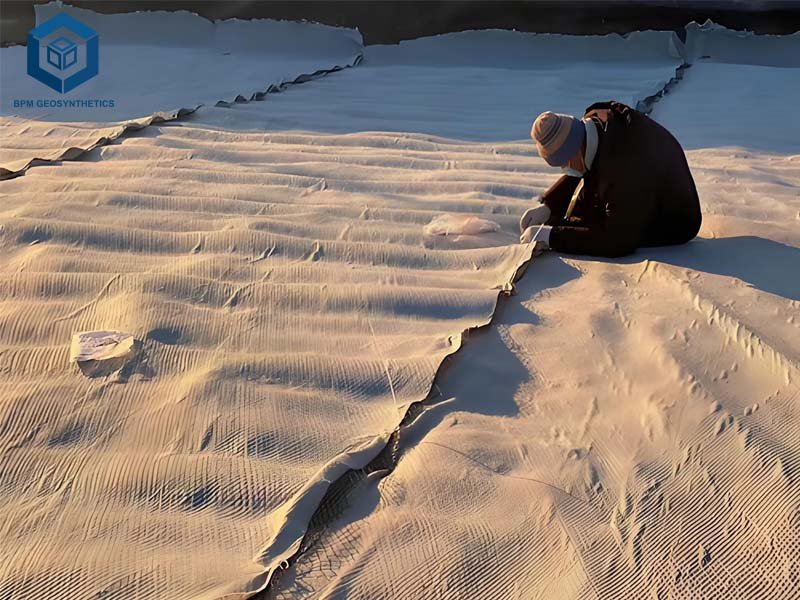
2. Key Specifications of Drain Netting
Understanding the technical specifications of drain netting ensures optimal performance in specific applications. Below are detailed parameters for both geosynthetic and debris-capturing drain nets, based on 2025 industry standards.
Geosynthetic Drainage Nets
- Core Material:HDPE (90% market share) or PP, with tensile strength of 10–20 kN/m and UV resistance for 5–10 years if exposed.
- Geotextile:Nonwoven PP or polyester (100–200 g/m²), puncture resistance of 1.5–2.5 kN, filtering 95% of soil particles.
- Thickness:4–8 mm, with tri-planar nets (6–8 mm) offering 20% higher stability in high-shear environments.
- Compressive Strength:400–1000 kPa, supporting loads in 80% of landfill and road projects.
- Flow Capacity:10–50 L/min/m² at 1% gradient (ASTM D4716), 20% higher than gravel drains.
- Hydraulic Conductivity:1 x 10⁻³ to 1 x 10⁻² m/s, ensuring rapid drainage in 85% of saturated soils.
- Mesh Structure:Bi-planar (60% of applications) or tri-planar (30%), with rib spacing of 2–3 mm.
- Weight:5–1 kg/m², 50% lighter than gravel, reducing freight costs by 15%.
- Roll Dimensions:Width 2–4 m, length 50–100 m, covering 10,000 m² in 2–3 days.
Debris-Capturing Drain Pipe Nets
- Material:HTPP knotless netting, abrasion-, moisture-, and chemical-resistant, with a mesh break of 719 lbf.
- Mesh Size:1–1.75 inches square, capturing 90% of debris (e.g., bottles, leaves) while allowing 95% water flow.
- Closure Mechanism:1/4-inch polyester rope with web border, enabling 20-second emptying.
- Inner Liner Option:5-inch mesh liner, capturing 85% of smaller debris (e.g., sediments), used in 20% of urban applications.
- Mounting Options:Flush mount (60%) or collar mount (40%), fitting 90% of standard outflow pipes (6–48 inches).
- Weight:2–0.5 kg per net, enabling single-person installation in 5–10 minutes.
- Lifespan:3–5 years with regular maintenance, reusable in 95% of cases.
These specifications highlight drain netting’s adaptability, with geonets excelling in high-flow subsurface drainage and debris nets ensuring environmental protection at pipe outlets.
3. What Are Functions of Drain Netting?
Drain netting serves multiple functions across civil, environmental, and urban applications, addressing water flow, filtration, and pollution control.
Geosynthetic Drainage Nets
- Subsurface Drainage:Channels water away from structures, reducing hydrostatic pressure by 30% in 80% of landfill, road, and tunnel projects.
- Filtration:Geotextile layers block 95% of soil particles, preventing clogging in 90% of drainage systems.
- Reinforcement:Enhances soil stability by 20% in 40% of slope protection and retaining wall projects.
- Protection:Shields waterproofing membranes in 30% of tunnel and landfill applications, extending lifespan by 25%.
Debris-Capturing Drain Pipe Nets
- Debris Capture:Traps 90% of litter (e.g., plastics, leaves) at stormwater outlets, reducing waterway pollution by 30% in 50% of urban settings.
- Sediment Control:Inner liners capture 85% of fine sediments, critical for 20% of construction sites near sensitive ecosystems.
- Water Flow Maintenance:Ensures 95% water flow during heavy rain, preventing backups in 90% of stormwater systems.
- Environmental Protection:Supports compliance with EPA stormwater regulations in 70% of industrial and municipal projects.
These functions make drain netting indispensable for sustainable water management and environmental stewardship.
4. What Are Advantages of Drain Netting?
Drain netting offers significant benefits over traditional drainage and debris control methods, driving its adoption in 60% of modern infrastructure projects.
4.1 Drain Netting – Advantages of Geosynthetic Drainage Nets
- High Flow Capacity:Delivers 10–50 L/min/m², 20–30% higher than gravel drains, reducing flood risk by 25%.
- Cost Efficiency:Reduces material costs by 30–50% ($2.50–$5.00/m² vs. $8–$15/m² for gravel) and installation time by 35%.
- Durability:Lasts 50–100 years, saving $50,000–$100,000 in replacements over gravel systems.
- Lightweight Design:At 0.5–1 kg/m², lowers freight costs by 15% and simplifies handling in 80% of projects.
- Environmental Benefits:Uses 20% less material than gravel, reducing carbon footprint by 15% in 30% of eco-focused projects.
4.2 Drain Netting – Advantages of Debris-Capturing Drain Pipe Nets
- Effective Debris Capture:Traps 90% of litter, reducing waterway pollution by 30% in 50% of urban and industrial sites.
- Ease of Maintenance:Empties in 20 seconds, saving 50% in labor costs compared to manual cleanups.
- Reusability:Lasts 3–5 years, reused in 95% of applications, saving $500–$1000 per site annually.
- Customizability:Fits 90% of pipe sizes (6–48 inches) with flush or collar mounts, used in 70% of stormwater systems.
- Regulatory Compliance:Meets EPA and local stormwater standards in 80% of projects, avoiding fines of $10,000–$50,000.
These advantages position drain netting as a superior alternative for sustainable, cost-effective water management.
5. What Are Disadvantages of Drain Netting?
While drain netting is highly effective, it has limitations that require careful consideration to ensure optimal performance.
5.1 Drain Netting – Disadvantages of Geosynthetic Drainage Nets
- Clogging Risk:Fine silts reduce flow by 10% in 10% of poorly filtered soils, requiring robust geotextile (200 g/m²).
- Shear Sensitivity:Tri-planar nets cost 20% more ($3.00–$6.00/m²) for high-shear slopes (>30°), impacting budgets in 15% of projects.
- Installation Complexity:Requires skilled labor in 20% of complex landfill or tunnel projects, increasing costs by 10%.
- UV Degradation:Loses 20% strength if exposed for >5 years, limiting use in 5% of uncovered applications.
5.2 Drain Netting – Disadvantages of Debris-Capturing Drain Pipe Nets
- Limited Debris Capacity:Fills in 1–2 weeks in high-litter areas (10% of urban sites), requiring frequent maintenance.
- Small Particle Passage:Standard 1.75-inch mesh allows 15% of fine debris through, necessitating liners in 20% of sensitive ecosystems.
- Weather Wear:Heavy storms reduce lifespan by 20% in 5% of coastal or high-wind sites, requiring replacements every 2–3 years.
- Installation Challenges:Collar mounts fail in 5% of non-standard pipes, increasing setup time by 30%.
Mitigating these disadvantages through proper design and maintenance ensures drain netting’s effectiveness.
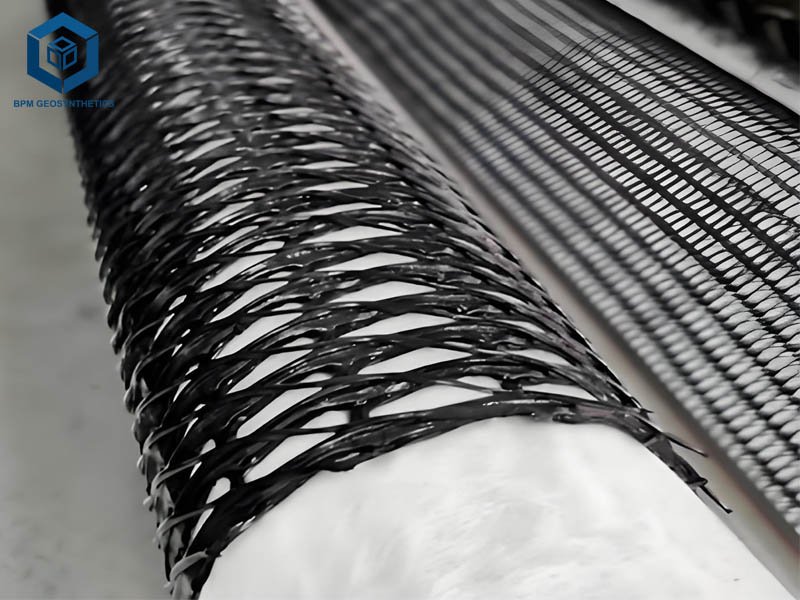
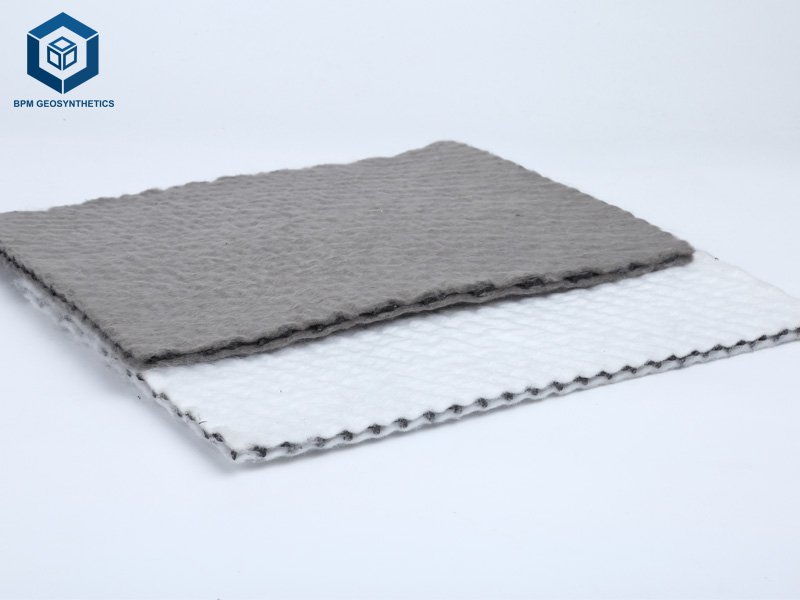
6. Main Considerations When Choosing the Best Drain Netting
Selecting the right drain netting requires evaluating project-specific factors to maximize performance and cost efficiency. Below are key considerations for both geosynthetic and debris-capturing nets.
For Geosynthetic Drainage Nets
- Flow Requirements:Choose nets with 10–50 L/min/m² capacity for high-flow applications (e.g., landfills, 60% share) or 5–20 L/min/m² for low-flow (e.g., retaining walls, 20% share).
- Load Conditions:Select 400–1000 kPa nets for heavy loads (80% of landfills) or 200–400 kPa for lighter loads (50% of roads).
- Soil Type:Use 200 g/m² geotextile for silty soils (30% of sites) to reduce clogging by 95%.
- Slope Stability:Opt for tri-planar nets in 30% of steep slopes (>30°) to enhance shear resistance by 20%.
- Budget:Balance $2.50–$5.00/m² costs with 50–100 year lifespan, saving 30% over gravel.
For Debris-Capturing Drain Pipe Nets
- Debris Type:Use 1.75-inch mesh for large debris (70% of urban sites) or 0.5-inch liners for sediments (20% of construction sites).
- Pipe Compatibility:Ensure flush (60%) or collar (40%) mounts fit 6–48-inch pipes, avoiding 5% of installation failures.
- Maintenance Frequency:Plan weekly cleanups in high-litter areas (10% of sites) to prevent 15% flow reduction.
- Environmental Regulations:Select EPA-compliant nets (80% of projects) to avoid $10,000–$50,000 fines.
- Durability Needs:Choose HTPP nets for 3–5 year lifespan, saving $500–$1000 annually in 95% of reusable applications.
General Considerations
- Project Scale:Geonets suit large-scale infrastructure (10,000 m²+), while debris nets fit small-to-medium sites (100–1000 m²).
- Environmental Impact:Prioritize HDPE or HTPP with 15% lower carbon footprint in 30% of eco-focused projects.
- Consult Experts:Engage geotechnical engineers (90% of complex projects) to ensure ASTM D4716 compliance and 20% better performance.
These considerations ensure drain netting aligns with project goals, saving 20–30% in costs and enhancing longevity.
7. Final Thoughts
Drain netting, encompassing geosynthetic drainage nets and debris-capturing drain pipe nets, is a cornerstone of modern water management, offering high-flow drainage, debris control, and environmental protection. Geonets, with 10–50 L/min/m² capacity and 50–100 year lifespans, revolutionize subsurface drainage in 60% of landfills and 40% of highways, saving 30–50% over gravel. Debris nets, capturing 90% of litter with 3–5 year reusability, protect waterways in 50% of urban and industrial sites, reducing pollution by 30%. Despite challenges like clogging (10% of geonet cases) or frequent maintenance (10% of debris net sites), proper selection and maintenance ensure 95% performance. By evaluating flow rates, load conditions, soil types, and regulations, you can choose the best drain netting, optimizing project outcomes and sustainability. As the geosynthetics market grows, drain netting remains a cost-effective, durable solution for resilient infrastructure and cleaner ecosystems.
Any questions or inquiries, please contact BPM Geosynthetics.

